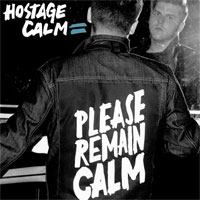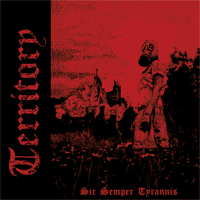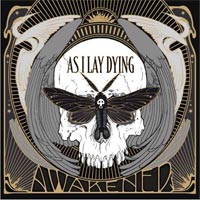Review: Pitchfork Music Festival 2009
Better late than never, here’s a very out-of-date review of the summer festival. Timeliness is not one of my Editor strengths… many thanks to James for putting this together – Jordan.
Pitchfork Music Festival in 2009. Some things change. Some things don’t. It’s still in Union Park (a couple baseball diamonds, basketball courts and shade groves), in Chicago. There’s more port-a-potties. [More after the jump]
There’s more vinyl being sold at the festival. Sub Pop used to bring hundreds of CDs. Now, they brought a couple racks of vinyl and maybe 20 CDs. I used to buy FUGAZI CDs (for $10) from the guys selling units for Southern. This year I bought RITES OF SPRING, ONE LAST WISH and NATION OF ULYSEES vinyl (now advertised at $11) with a digital download from the same people, now called Chicago Independent Distribution. I used to hoard Fuze from the Press Tent. This year, it’s just bottled water. There’s a bone thrown to fans of aggressive guitar music in the early afternoon. Last year it was BORIS. This year, it was FUCKED UP. There’s usually an obnoxiously unobjectionable band at around 4 or 5 p.m. Last year it was FLEET FOXES, this year it was THE THERMALS.
I’ve done Pitchfork‘s festival at least four times now, so I suppose I should cease to be surprised by it, but there’s something new that rattles around in my head with each visit. This year what resonated with me was that this was a little insular culture of its own, which I mean as a compliment. Like San Diego Comic Con or the Fest, there’s a palpable sense of congregation. And so what if there’s an element of preaching to the choir? Almost every vendor I saw was usually engaged in a very genuine “dude, you’ve GOT check out this other band” or conversation with a potential customer.
It’s a place for music nerds. This comes with a certain snobnishess, I concede. There was, however, less of the snide douchebaggery that was prevalent in 2008. Less people looking like they stepped out of a black and white photograph or like a Lite-Brite vomited on them, less people that looked and acted like the remains of Pollock’s trash can and more people that didn’t view their wardrobe as a their post-graduate “performance” thesis. Water was a little more expensive, $2 (up from $1.25) but the vibe overall is still something remarkably low key in the day and even minutes before the headlining acts.
(And before I start, my favorite set was FUCKED UP [unsurprisingly] at a quietly promoted performance at 12:15 AM Saturday morning at the packed Subterranean, where the band got 12 stagedives before they started playing their first song.)
Yes, there were a surprising amount of bros out for THE NATIONAL, hippies for FLAMING LIPS and thirty-something families bringing their toddlers out on the lawn, but those people felt to me more like interlopers (as did the metal fans and oldheads out for THE JESUS LIZARD) to the proceedings. Admittedly, I’m an interloper too. I mean, yes, I’m in their demographic and there’s the inevitable discussion of independent music and the widespread use of the word indie without the anti-corporate conceit, which Pitchfork has come to symbolize, for a lot of people. (Then again, I was finishing Naomi Klein’s The Shock Doctrine, so her 500+ page book may have influenced my thinking at the time.)
With that lens on, the compromises Pitchfork has made seem to be smart. Many of the sponsors seemed to be local (the most obvious large sponsor was Motorolla, which is a non-starter for me), like the Chicago Public Library or the Reader. Sure, Saucony was there, ready to facilitate “crazy” events just waiting for the inevitable social networking update, but they were the most egregious example of an obvious ploy for attention. Oddly enough, Nintendo had some hired guns showing off the DSi, which meant that my blue shell shirt (under the BANE hoodie I am contractually obligated to wear) went right over the heads of Nintendo, which was extremely disappointing, especially considering they were showing off Mario Kart on the DSi. Riot Fest was there, ostensibly to promote their upcoming festival, but I have a sneaking suspicion that it was instead to watch THE JESUS LIZARD (Stagedive within the first 2 minutes? Approved!) and drink for two days straight on the company tab.
But then again, maybe I’m pinning too much on Pitchfork. This isn’t mean to be a seance on them so much as trying to figure out how I feel about one of the best known festivals in the country curated by the people behind a website that’s become synonymous with post-Niravana independent music and what that means for the word indie that no longer retains, as Anne Elizabeth Moore (ex-Punk Planet editor) pointed out, the belligerent anti-corporate conceit. Then again, PHAROAHE MONCH did perform and dropped some pretty heavy stuff on the audience, though by that point he’d already won my heart for namedropping Daredevil in the first song.
I’m not sure how I feel about it, but Pitchfork‘s secret strength for me this year was the electronic artists, LINDSTROM and DJ/RUPTURE, whose genre-hopping I enjoyed immensely, despite both artists staring intently at their computer screens for their performance, LINDSTROM getting into the show by *gasp* taking off his glasses. That’s what ultimately keeps me excited about Pitchfork‘s festivals, just the artists you don’t expect and the diversity of music that somehow contributes to the unity of the experience.
Pitchfork‘s festival acts as my sampler of music I wouldn’t hear about or get access to here or on my other trusted filters and it continues to service that. One of my friends said that the festival had run its course, but I think he’s wrong. For a certain segment of Pitchfork‘s base, I can see them feel like something that they can’t put their finger on isn’t quite the same and that just might be that more people are coming to the festival and the festival itself is getting smarter about how it keeps more segments interested.
Put differently, Pitchfork this year for me has a strange parallel, late-generation videogames. Union Park has been the space for the festival since its inception and I feel like the curators are beginning to reach the limits of what they can do with the space and the amount of people they’re drawing. They might even want to expand to accommodate a larger audience, which is a strange road to consider.
Whatever happens in the future, selling out three days of a festival, two of them a week in advance doesn’t hurt one’s cause, whatever it is.



